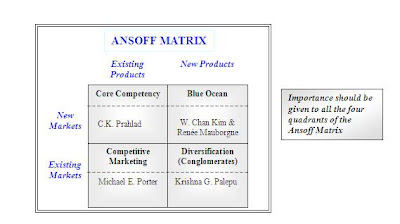- Let customer speak once more: The conceit to assume that one knows “what customer wants?” is a dangerous habit that grows proportionately with years of experience as consultant. Hence the resolve to ask one more question (after the hurried run through of the check-list) before preaching to customer “what he needs to do” and be patient and shut-up till he reflects and respond. Better Insights, Better Results.
- Dump the soulless Language : Enough of strategy, competency, commitment, knowledge management, collaboration; words which although bring sophistication to the dialogue, make conversations slave of standard patterns and arguments devoid of personnel attachment. Hearts and Soul react better to words like choice, will, clever, create, partnering or winning. Resolve to substitute as many listless words with curiously new/even absurd sounding words that provoke emotions.
- Learn from new sources: Reading from similar sources is often more reassuring bias then illuminating new perspectives. Our ability to traverse knowledge across boundaries, often call for right level of abstraction, which with practice is within human realm of learning. Hence, resolve to consciously try to pick Dominique Lapierre over John Kotter, with hope that his recount of historic events has much to teach us on managing large scale transformations and radical societal shifts, that are going to be characteristics of global business entities.
- Leverage Collective Intelligence: Captive knowledge and learning has a good companion in the form of wisdom of crowds and experts (real and imagined). Social media enable us to gather dispersed knowledge from our networks –no matter how weak are the links- as long as we have directional understanding of what we are seeking to achieve. Promise for potential digital eminence is sufficient for Gurus and specialists to willingly share and contribute. Resolve to go beyond captive intelligence to leverage dispersed but accessible knowledge in quest for better answers; but not to let collective intelligence be substitute to personal wisdom.
- Leap beyond quick wins : Resist the temptation of bunching all quick wins (low hanging fruits etc) at the beginning of the execution plan to any transformation program, with hope that this will create momentum and stakeholder buy-in for expected tougher steps ahead. It seldom achieve these objectives, except making the program sponsors look good to have achieved something tangible in the short run- while doing nothing to mitigate stakeholders’ resistance for tougher measures ahead.!!! Resolve to see, that transformation initiatives insist on crucial steps early on (supported by better stakeholder management, plain speak and sufficient resource commitment) and to ensure that results come before project sponsors move on (say in first year). Further easy wins are dispersed along the complete program timeline then bunched in the beginning.
Happy to hear one thing that you plan to do differently in 2011.






